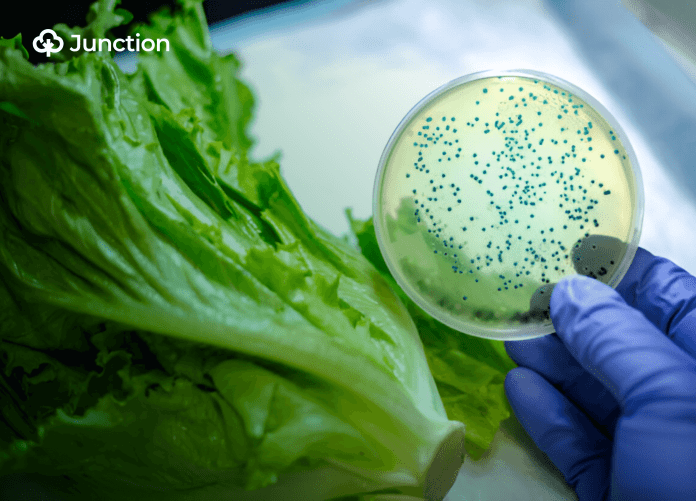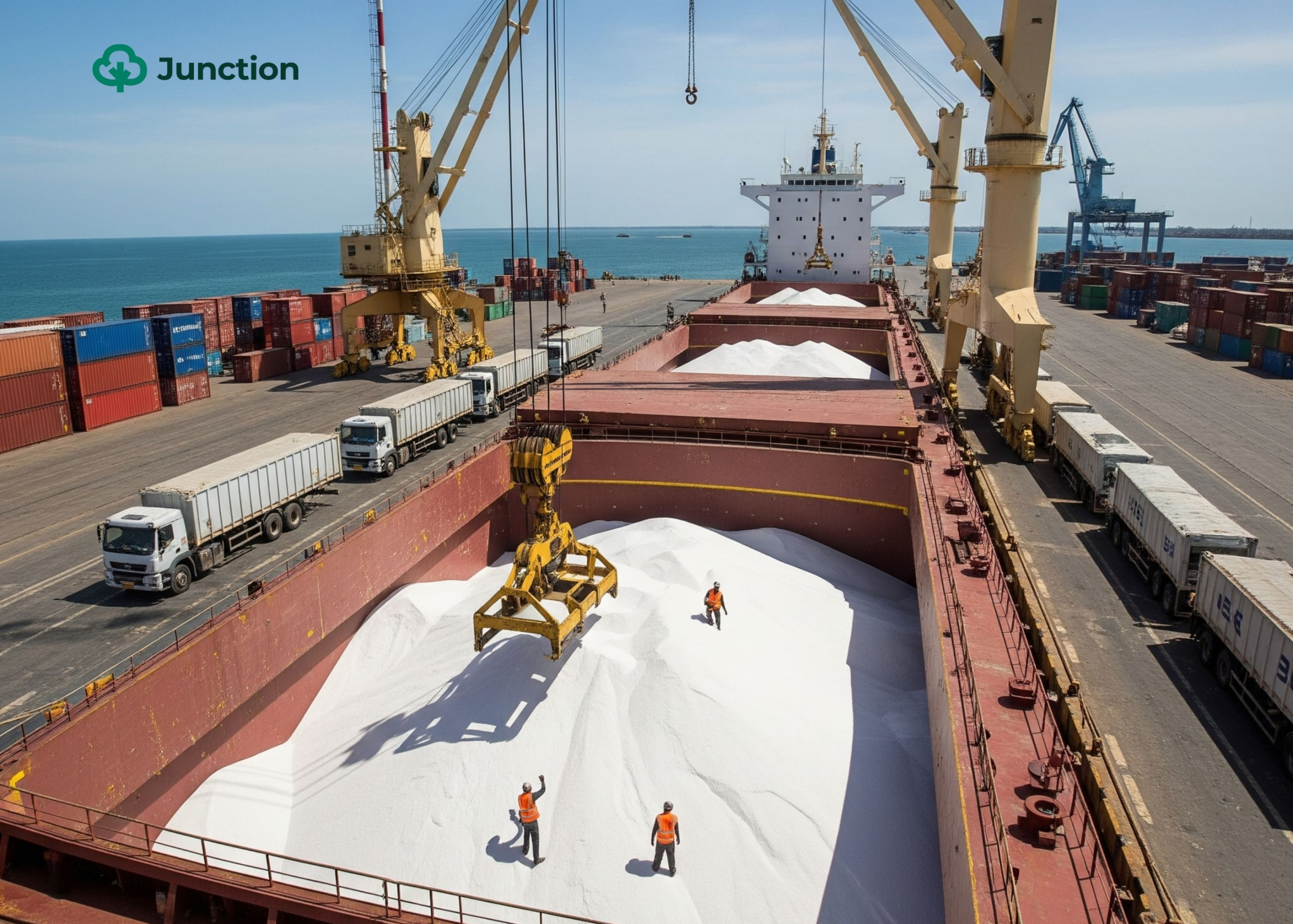Questions answered in this article:
– What is cholera and how does its mode of transmission necessitate the need for principles used in food traceability technology?
– How can health authorities leverage the effectiveness of these tracing tools in controlling cholera outbreak?
– What are some challenges that could hinder the use of this technology in Nigeria?
A cholera —a bacterial disease that causes severe diarrhoea and dehydration— outbreak in Lagos has claimed the lives of 15 people in Lagos state in just a matter of days. About 350 more people are suspected to be infected as well, while the state’s health ministry continues working on solutions like inspecting facilities, distribution of Oral Rehydration Solutions (ORS), public health education campaigns and sharing test kits across the state.
Although the ministry says that the number of cases are reducing in local government areas (LGAs) that were previously affected, it is recording some new cases in previously unaffected ones.
This is not an isolated or rare occurrence. In 2021, the country’s CDC reported 111,662 suspected cases of cholera and 3,604 people died from it in that year.
However, what could have been done to prevent this and what can be done to prevent another outbreak from happening again?
The World Health Organization (WHO) says that Cholera is often predictable and easily preventable with access to clean water and sanitation facilities. It also encourages good hygiene practices.

However, food traceability technology offers another effective way to prevent, predict or contain viral diseases caused by contamination, such as cholera. This technology uses tools and methods to track food from farm to the table.
Since cholera is spread by consuming contaminated food or water, it is essential to monitor what the public is consuming and safeguard their health. Here are some ways that traceability technology can help out.
How traceability technology can help prevent, predict or control cholera outbreak
Faster recalls
One of the most effective ways that this technology can help to contain a cholera outbreak is by aiding faster recalls of contaminated product. Armed with the necessary tools, the ministry of health in the affected region, like Lagos, can accurately pinpoint which stores or retailers are selling suspected contaminated products and put a stop to it.
It is even very crucial in this outbreak in Lagos as there were several claims that the first cases of the infection were of people who had consumed locally made tiger nut drinks. Unregulated drinks like these make it impossible to trace source and buyers, making it harder to contain infections. It is also nearly impossible to recall the products that are suspected to have been contaminated.
If producers and processors are properly registered in a centralised data base, recalls can be made quickly. One recent example is food companies in the United Kingdom recalling their products over fears of possible contamination with E. coli, which can cause bloody diarrhoea, stomach cramps, fever and vomiting. The lesson from this example is how the manufacturers knew all the stores that sold their products.
Targeted and more effective interventions
With effective traceability systems, the government can better focus its efforts in solving the problem. If a processing factory or a farm is the source of the contamination, the authorities can take the necessary actions to prevent further infection while making the facility safe again.

In a case where interventions are ineffective, food factories could be shut down for longer periods over unfound fears. This kind of move could worsen the food price inflation already afflicting Nigerians.
In some cases, the contamination may be coming from the mode of transportation or the vehicles being used. Traceability provides the accurate infomation required to deduce this as it can track when the contamination first occured. In the absence of this technology, the health ministry is left testing as many facilities as possible to narrow down leads, which will take longer.
Prevention
While prevention of cholera outbreaks may be harder than control when using traceability technology, it still offers the necessary tools that come close to acheiving this. For example, if a region is notorious for contaminated crops, the authorities may be required to apply stricter measures to its production processes to prevent future outbreaks.
Saving lives
With the percentage of fatalities associated with cholera being above 10%, quick treatment can mean the difference between life and death for infected people. Cholera is fatal if not treated quickly and because it takes some people as long as five days to show symptoms, it may have caused irreversible damage by that time.
Hence, when there is an effective tracking system, even people without symptoms can be encouraged to get themselves checked if there is a possibility that they have been exposed. In addition, because infected people can infect others, traceability can help track sufferers behaviours after infection.
Note that the first three concepts mentioned above can also be applied to water systems and distribution, which is primarily how cholera spreads. With sensors and continuous monitoring systems, authorities can track water quality parameters like chlorine levels, conductivity, and presence of specific contaminants. This real-time data can form an early warning system of potential contamination events.
Also, when contaminated water sources are identified, they can be quickly shut off to prevent further infection. Then, they can target the places where the water has been supplied to before it was shut off to provide aid and assistance quickly.
Types of traceability technology
1. Radio frequency identification (RFID) tags can be attached to food items and water packagings which emit radio waves that can be scanned to track their location. These can also be used in cases of water tanks that supply to houses in places where there is no central water distribution system.
2. Barcodes are already widely used for tracking and storing basic information about a product. Although, in places like Lagos, not all publicly distributed consumables have barcodes or even a registration number from the National Agency for Food and Drug Administration and Control (NAFDAC). With the agency’s online portal, it would have been easy to see information about suspected contaminated foods linked to the recent cholera outbreak and hunt down the facilities where they were made.

3. Sensors, which were already mentioned in the previous section, can help monitor things like temperature and humidity during transport and storage, ensuring proper conditions are maintained.
4. Blockchain is the latest traceability technology being tested as it could provide a publicly available record of a food item’s journey all through the production value chain. With its security, details will not be alterable or changed by just one person without others knowing about it, and its large capacity will be able to hold additional details for consumers.
Problems with adopting food traceability technology in Nigeria
The cost of implementing traceability technology can be expensive as it will include buying and installing hardware ans software, as well as the cost of ongoing maintenance. Small and medium-sized businesses in the food chain may struggle to afford these initial investments.
Another problem is that food traceability systems might not be effective if there are not enough infrastructures to utilise them. Already, the country struggles with basic things like a proper infrastructure to distribute electricity that it generates effectively. Things like cold storage, proper transportation, and a monitoring system could be a bigger challenge than it can take on.
Poor dgital literacy is also a big problem that could frustrate the application of food traceability technology in Nigeria. A bulk of the food producers are rural dwellers with basic education and they may find it hard to understand and adopt complex digital concepts like traceability.
While big businesses can easily effect this if necessitated, it may sideline others, creating a food system controlled by only a few individual or corporations.
Conclusion
Food traceability technology offers an effective way to ensure that many Nigerians do not lose their lives to cholera outbreaks. It can help manufacturers issue faster recalls of contaminated products, health authorities to effectively intervene in infected facilities and regions, outrightly prevent future outbreaks and save lives with quick treatments.
However, to make use of these tools, the country needs to set up infrastructures that support them. It will also need either massive outreach programmes to educate primary food producers or a system that merges them with more educated and digitally aware medium-scale producers.
In the meantime, Lagosians should continue observing top notch hygiene practices, avoid public food that they cannot vouch for how it was prepared, and boil their water.



